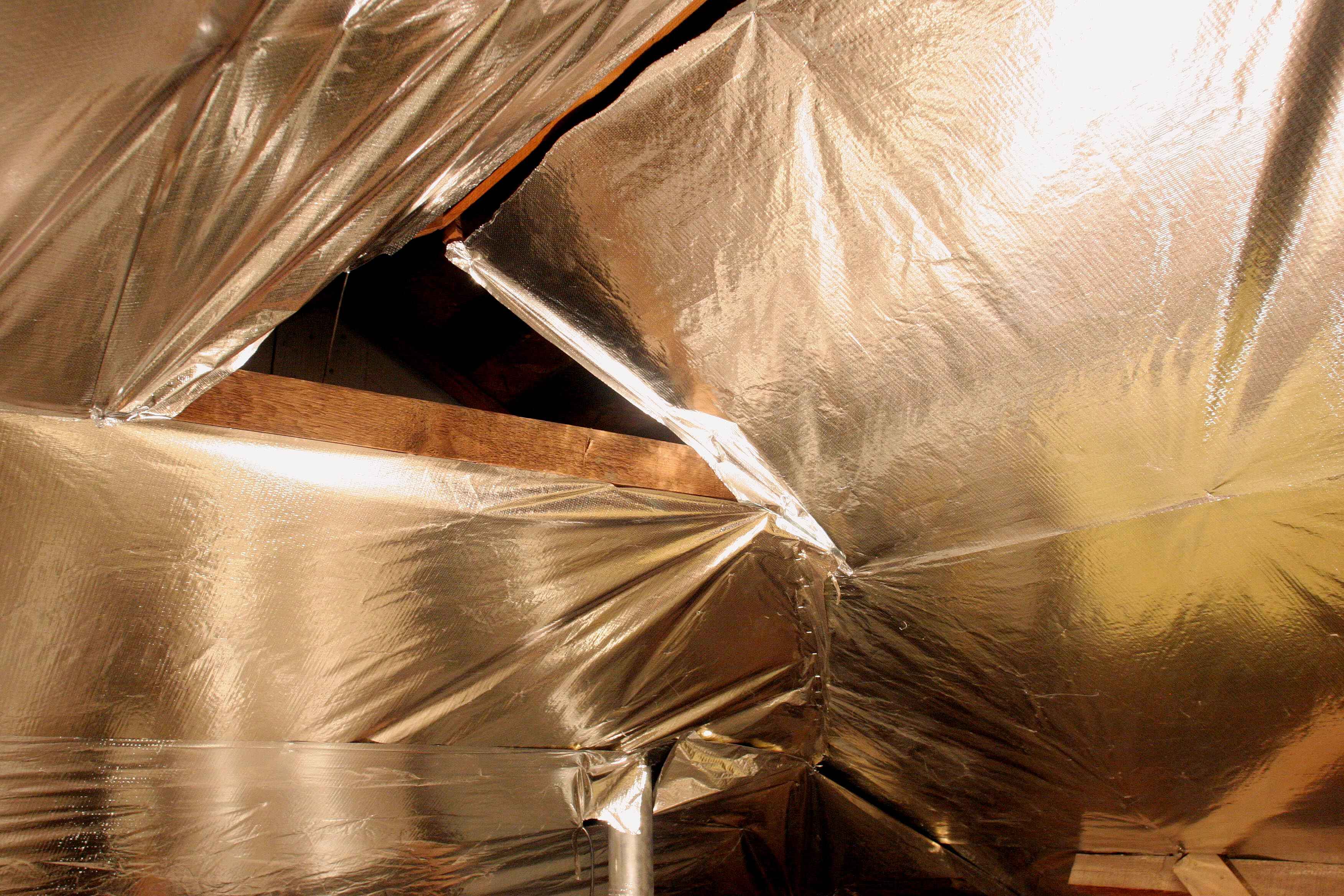Radiant Barrier Myths To Overlook
Not Everything You've Heard About Radiant Barriers Is True. If You're Thinking About Getting One For Your Home, Read This First.
Not everything you've heard about radiant barriers is true. If you're thinking about getting one for your home, read this first.
A radiant barrier works as a heat reflector to keep your home cool on a hot day. As the name suggests, a radiant foil barrier uses a reflecting surface to block the entry of radiant heat into the home. The infrared radiation emitted by the sun causes roofing materials to heat up and radiate heat in all directions.
Roofing radiant barriers are the most effective when it comes to limiting summertime radiant heat absorption. According to the US Department of Energy, radiant roof barriers may lower the costs of running the air conditioner by 5-10% when used in hot climates.
Does radiant barrier help in winter? Yes! The radiant barrier's roof sheath prevents heat loss from the warm interior.
Even after years of study that have been put to the test, naysayers are still unaware of the genuine radiant barrier benefits to a house's heating and cooling system. Radiant barriers have been helping households save money on energy costs for nearly three decades.
The following is a list of myths concerning nonexistent radiant barrier insulation problems:
Myth: Radiant Barriers Will Ruin Your Roof
A widespread misunderstanding concerning roof radiant barriers is that radiant barriers under shingles reflect radiant heat into it and reduce the roof shingles' lifespan. Even though the sun's reflected heat causes heat transfer from the roof's bottom, it does not impact the shingles' life.
Does radiant barrier damage shingles? Radiant barriers and adequate venting, when installed correctly, should not harm the roofing materials and will not void any guarantees since shingle warranties only cover manufacturer errors, not installation problems.
Shingles are intended to withstand temperatures between 160 and 190 degrees Fahrenheit. On a hot summer day, a radiant barrier installation only causes a 2 to 5 degree Fahrenheit rise in temperature on shingles. This little increase will not violate any roofing warranties; therefore, proceeding with your radiant barrier installation project is safe.
Myth: Radiant Barriers Don't Work When Dusty
Regardless if you have a dusty attic or dust accumulates on your radiant barrier, it does not diminish its function of reducing attic heat flow and overall home cooling loads.
However, due to dust accumulation, radiant barriers placed horizontally on top of insulation on the attic floor will lose some efficiency over time. Putting radiant barriers and insulation on the attic floor also results in reduced attic movement.
Dust buildup was a radiant barrier problem with one-sided aluminum in the past, but nowadays, double-sided aluminum is used, allowing for longer heat reflectivity. Radiant barriers always result in a rejection rate of about 97% of the radiant heat from the sun.
Myth: Radiant Barriers Cause Moisture To Build Up
Water vapor cannot travel through a non-perforated radiant barrier. Non-perforated insulation in your attic means warm air and moisture from within the home will ascend and have nowhere to go.
Attic condensation will damage your house if it condenses on the radiant barrier. Air and water vapor may get through a perforated barrier because of the small pores in the barrier material.
Because of this, if you have moisture in your attic, much like other forms of effective insulation, the radiant barrier will not allow it to pass through. But…you shouldn’t have moisture in your attic! It’s hugely detrimental to your insulation, your attic joists, your roofing, etc.
In other words, radiant barriers do not cause moisture to build up, a leak or unsealed attic causes moisture to build up.
Ensure certified attic specialists seal all holes in the ceiling, that vents are aimed upward and away from the insulation, and that all ducting, HVAC equipment, and lighting fixtures are also sealed correctly. If you’ve got a well-insulated, well-sealed attic, you’ll be in great shape.
Myth: Radiant Barriers Degrade or Delaminate Over Time
Radiant barriers have a lifespan that may range anywhere from 80 to 100 years if certified attic specialists install them appropriately and seal and insulate the rest of your attic. You may use it worry-free for decades without experiencing any major issues.
Radiation barriers that certified attic specialists put up thirty years ago have not delaminated and are still operating at or near their maximum levels of efficiency.
Conclusion
The ultimate radiant barrier myth: radiant barriers are the end-all, be-all of home energy conservation.
Radiant barriers are not the silver bullet when it comes to improving the energy efficiency of a house. They are only components of an integrated building envelope alongside attic insulation and ventilation. They are hardly the panacea that will solve all of our energy efficiency problems.
Foolproof your radiant barrier installation by working with a certified attic specialist. When done right, radiant barriers save money on energy bills for homeowners by reducing their energy use and extending the lifespans of their heating and cooling systems. For example, certified attic specialists know how to install radiant barriers with their reflective surface facing an open-air space.
Lastly, radiant barriers improve your home's overall marketability and resale value.

